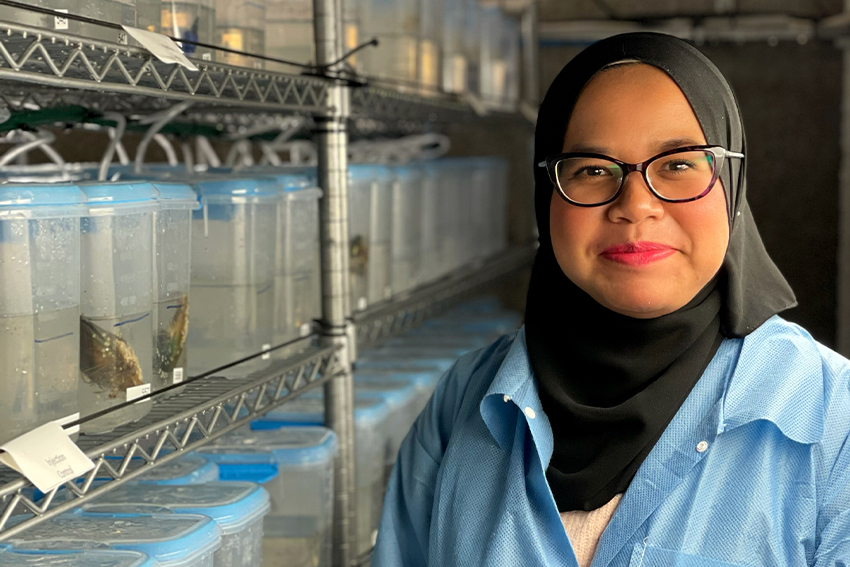Tools to combat mussel threat

Hidden away in WN Building on the City Campus, is a new tank system for 600 mussels. The setup, which houses each mussel in an individual tank, uses 300 meters of airline, eight air pumps and 3,000 litres of water.
The Aquaculture Biotechnology Research Group designed the system during lockdown last year and is using it to investigate the survival chances of New Zealand Greenshell mussels against bacterial pathogens. The experiment is a collaboration with Nelson-based Cawthron Institute to look at summer mortality in shellfish, and is part of the Ministry of Business, Innovation and Employment’s (MBIE’s) Aquatic Health Strategies programme, for which AUT has a large sub-contract.
The research is also the focus of postgraduate student Awanis Azizan’s PhD study. Awanis is providing insight into the ways New Zealand Greenshell mussels, Perna canaliculus respond to environmental influences such as heat stress and pathogen loads and helping develop tools for assessing shellfish health. Awanis, who is supervised by Professor Andrea Alfaro, says marine heatwaves and high pathogen loads were associated with a high incidence of mussel deaths in April 2018. “Our sampling resulted in the isolation of marine bacteria species within Vibrionaceae for further investigation.”
Vibrionaceae are rod-shaped, gamma-proteobacteria and include many species that can cause disease in both terrestrial and marine vertebrates and invertebrates. These marine bacteria are a major concern in aquaculture due to the increasing number of strains and species found to be pathogenic for fish and shellfish.
“Such pathogens can cause severe production losses in the industry. Isolation of potentially pathogenic bacterial strains are essential for analysis of their genetic and phenotypic characteristics, and for elucidation of their virulence mechanisms in relation to their specific host environment.” As an important milestone for Awanis’s PhD, she characterised and cultured the species of Vibrionaceae isolated from compromised mussels and cultured infectious stocks for the next phase of the project.
Researchers injected mussels with different species of Vibrionaceae at different concentrations to find out their potential for harm to mussel production and survival. Infectious dose experiments aim to determine the relationship between exposure of an animal to a certain dose of a pathogen and the probability of developing an infection and diseases, where a dose is the number of pathogen particles entering the host through a given route. This was followed by daily survival monitoring, water exchanges and water quality parameter tests. Results from this trial will guide experiments at Cawthron Institute in Nelson to investigate what happens when temperature stress and pathogen stress are combined.